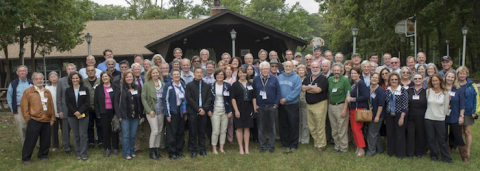The year 2016 marked the 29th anniversary of the beginning of FIFE’87 and the 20th anniversary of the conclusion of BOREAS. On October 6-7, 2016, a gathering of interested parties convened for a reunion meeting at NASA’s Goddard Space Flight Center (GSFC), called How FIFE/BOREAS Changed the World.
In the early 1980s, little was known about interactions between the atmosphere and Earth's surface and how these interactions might affect the Earth's systems and climate. Conceived of in 1983, the idea behind the International Satellite Land Surface Climatology Project (ISLSCP) was to study the land biosphere in terms of its relevance to Earth’s climate. This would require a series of field experiments to develop and improve general circulation models (GCMs) and to answer increasingly interesting and important Earth-system science questions.
The First ISLSCP Field Experiment (FIFE) began in 1987 and was a multiscale experiment that took measurements from the small scale (where biologists understood plant behavior) to the large scale (where remote sensing specialists could describe the aggregate result of the those small-scale processes). BOREAS began in 1993, with observations taking place over a large region with two distinct study areas in northern Canada.
The goals of FIFE and BOREAS were to develop and test methods for upscaling biophysical understanding from meter scales to geographic scales—where carbon, climate, and weather models operate. They were also to develop and test satellite remote sensing algorithms for inferring the surface drivers of these models—e.g., albedo, temperature, soil moisture, and vegetation type. FIFE and BOREAS were transformative for modeling, and provided significant ground truth for evaluating forecast models; the FIFE dataset was used to test every land surface model for a decade.
Data produced by the FIFE and BOREAS experiments were captured and shared widely. The FIFE Information system grew into NASA’s first working interactive online data system, which successfully supported FIFE, formed the basis for the BOREAS Information System (BORIS), and was a direct precursor to the ORNL DAAC.
Hundreds of data sets from FIFE and BOREAS are available from the ORNL DAAC at:
FIFE and FIFE Follow-On
BOREAS and BOREAS Follow-On
“In retrospect, it’s clear that the years of hard and painstaking work by the FIFE and BOREAS teams were absolutely critical in getting the Earth Observing System started, designed, and launched—and how remarkable and rare a success the EOS project was.” —Forrest Hall
Read more in the Jan/Feb issue of The Earth Observer


